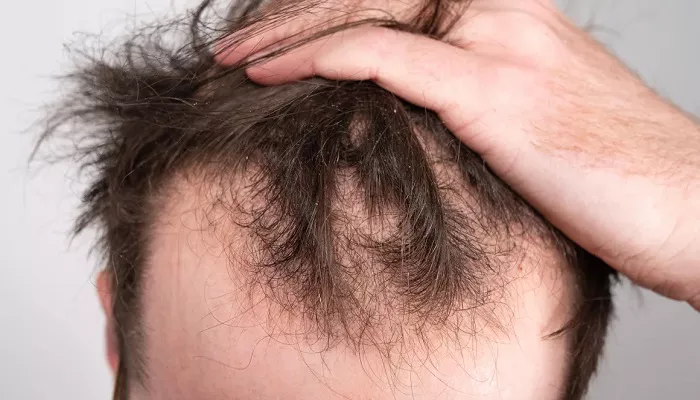Hair loss affects up to 90% of men during their lifetime, often leading to low self-esteem, anxiety, and depression. Common signs include a receding hairline, bald spots on the crown, and thinning hair at the part.
A new analysis found that taking 0.5 milligrams of oral dutasteride daily may be the most effective option to reduce male hair loss. However, the drug is not approved by the U.S. Food and Drug Administration (FDA) for treating baldness. It is officially used to treat enlarged prostate glands, making its use for hair loss “off-label.”
Off-label prescribing is common, said Dr. Rossi, a hair loss expert, especially when there is strong evidence to support it. Still, dutasteride comes with more severe side effects than other treatments. These may include loss of libido, erectile dysfunction, and low blood pressure upon standing.
In rare cases, men taking dutasteride may experience serious allergic reactions, such as facial swelling, difficulty breathing, or skin peeling. Any changes in breast tissue, including lumps or nipple discharge, should be reported to a doctor immediately.
Experts also warn older men to consult their doctors about prostate cancer risk before using dutasteride. Studies suggest the drug may raise the chance of developing high-grade prostate cancer, which tends to grow and spread more aggressively.
Another option is finasteride, which is less powerful than dutasteride but may be safer for some men. Both drugs are taken orally and work by blocking hormones linked to hair loss.
Over-the-counter minoxidil is the most widely known treatment for both men and women. Available as a liquid, foam, or shampoo, minoxidil must be applied twice daily. While effective for some, it can leave hair sticky and hard to style. Side effects may include scalp irritation, flaking, and dryness.
If results are unsatisfactory, patients can switch to oral minoxidil, though it’s also not FDA-approved for hair loss and may carry more risk.
Dr. Rossi suggests starting with milder treatments first. “Many people take a stepwise approach,” he said. “They may begin with finasteride, then try dutasteride if needed. Or start with topical minoxidil and move to oral options if results are poor.”
However, the findings do not apply to women. About 50% of women experience hair loss, but studies on the medications in females are limited.
Dr. McMichael, another expert, cautions that oral drugs for hair loss are unsafe for women who could become pregnant. “Only minoxidil, in 2% and 5% strengths, is approved for women,” she said. “And 5% works better. But I would not recommend using the results from this study to guide treatment in women.”
Hair loss remains a complex condition with no one-size-fits-all solution. Consulting a dermatologist who specializes in hair loss is the best way to find a safe and effective treatment plan.


